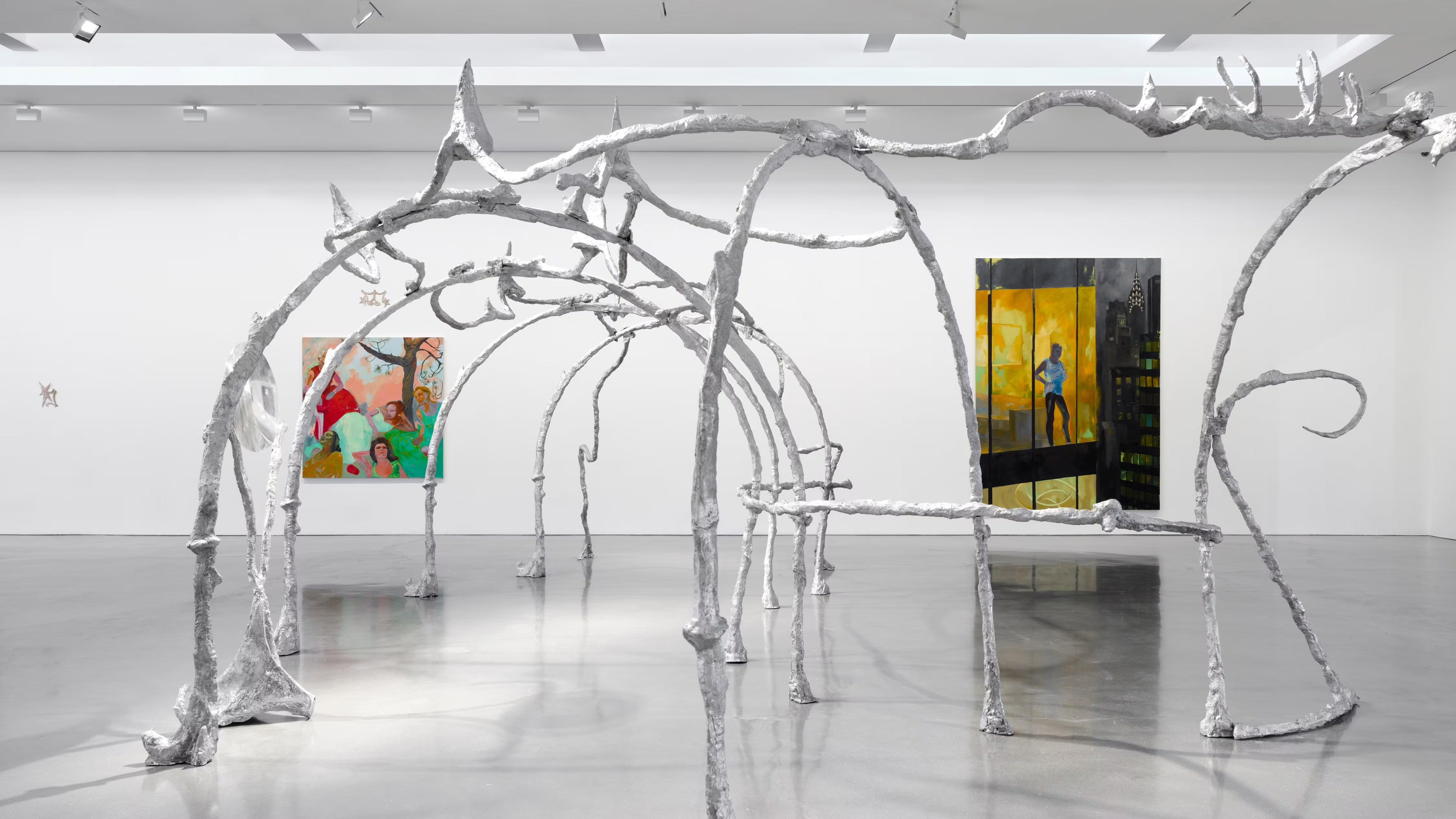
Though “Porcelains in the Mist” spotlights three generations of ceramicists from the renowned Kondō family, a majority of the works on display at the Brooklyn Museum exhibition opening this weekend are by Takahiro Kondō. Through his revolutionary oeuvre, the youngest Kondō has underscored the house’s collective influence as well as his singular, boundary-pushing vision.
Born in 1958 in Kyoto, Japan, Takahiro followed an unconventional path. It wasn’t until he was in his mid-20s that he discovered his passion for art. Prior to that he was a professional table tennis player, working his way to Japan’s top ranking. When his uncle, Yutaka, committed suicide, his world shifted. Takahiro sought out to uncover his family’s history, and everything led him back to ceramics.
At 26, he returned home from Tokyo to Kyoto to study the craft. Soon, he was assisting his father, Hiroshi, and absorbing the city’s Gojō-zaka pottery tradition as well as methods invented by his grandfather, Yūzō, who was a ceramics pioneer known for his innovations with sometsuke (cobalt underglaze freehand-painted on porcelain) and intricate use of metallic glazes that he passed down to his two sons. These styles offered a solid foundation for Takahiro’s practice, but soon he started looking for more: something to set him apart and define his artistry.

In 1990, Takahiro’s family sent him to São Paulo for his first solo show overseas. The artist returned from Brazil invigorated, questioning the rigid rules of form that had so far guided his practice. He soon eschewed thrown vessels for abstract, rectangular shapes. As he absorbed his hometown’s century-spanning architecture, the young artist saw the ancient temples and modern buildings with new eyes. “Looking at Kyoto, I came up with the idea of mixing things with contrasting, or ambivalent, qualities,” he said in 2018 while in residence at the Gardiner Museum. Takahiro distilled his observations into two contrasting elements: fire and water. Clay, he determined, would be a vessel for a transmutation. Water became a spiritual force.
Again he thought of his late uncle, this time revisiting a Korean ceramic stamping style that Yutaka had reappropriated. Takahiro entered another era of experimentation that culminated in his now-signature overglaze: a spray of dewy, metallic drops that he coined gintekisai or “silver mist.” The technique opened up a new world of ceramics for the young artist, and vessels all but gave way to sculptures. He set his eyes on contemporary art.
In 2002, the artist arrived at the Edinburgh College of Art in Scotland on an artist fellowship funded by Japan. He forged a life-long connection with the rocky, otherworldly terrain and ventured to London where he discovered the international art scene and had a revelation: Ceramic pieces were being shown in galleries alongside paintings. The formative experience reinforced his belief in clay as a medium for fine art. Later, when the catastrophic earthquake and tsunami struck offshore in 2011 and caused a nuclear accident that left northeastern Japan reeling, Takahiro felt the aftershock run through his work. His clay became charged with the tragedy of his times; it became a balm to heal and a tool to document.
He returned to the pottery wheel and dug local clay to make nearly 2,000 small ceramic bowls for those affected by the disaster. In 2013, his “Reduction” series, he made life-size sculptures in his likeness. The same year, he placed his ceramic doppelgängers atop piles of glass containing fragments of glowing radioactive material for his “Firefly” series.
Today, working from his grandfather’s original studio, Takahiro continues to challenge the role of functionality in ceramics, resulting in fluid and subversive studies of form. Large white porcelain jars crack and bend to abstract ends, marbleized waves ripple, and figurative sculptures recall mythological figures—his silver mist still glistens on many surfaces.
“Porcelains in the Mist” is on view at the Brooklyn Museum at 200 Eastern Pkwy, Brooklyn, NY 11238 through December 8, 2024.
















.avif)


_result_result.avif)



.avif)

_result_result.avif)

_result_result.avif)
.avif)

_result_result.avif)


_result_result.avif)


.avif)




.webp)

.avif)















%20(1).avif)
.avif)




.avif)










.avif)


.avif)





















.jpeg)

.avif)

_11%20x%2014%20inches%20(2).jpg)







.avif)

.jpg)

%20(1).jpg)
.avif)
.jpg)

.jpg)
.webp)


.webp)



.webp)


.webp)


.avif)












.avif)
.avif)












.avif)



.avif)




















-min_result.avif)









.avif)







3_result.avif)
_result.avif)






_result.avif)




.avif)




.avif)













_result.avif)




%2520(1)_result.avif)
_result.avif)


_result.avif)

_result.avif)



.avif)

.avif)






.avif)














.avif)


_result_result.avif)
















-min_result.avif)






.avif)
.jpg)
















_result.avif)

.avif)


.avif)







.avif)





.avif)

_result.avif)



.avif)












.avif)


.avif)














.avif)




.avif)








.avif)

.avif)

.avif)



.avif)


.avif)




.avif)

.avif)

.avif)
.avif)
%20(1).avif)
.jpg)

%20(1).avif)








.avif)
.avif)

.avif)






.avif)


.avif)
.avif)



.avif)
.avif)
%20(1).avif)

.avif)
.avif)



















.avif)
.avif)
